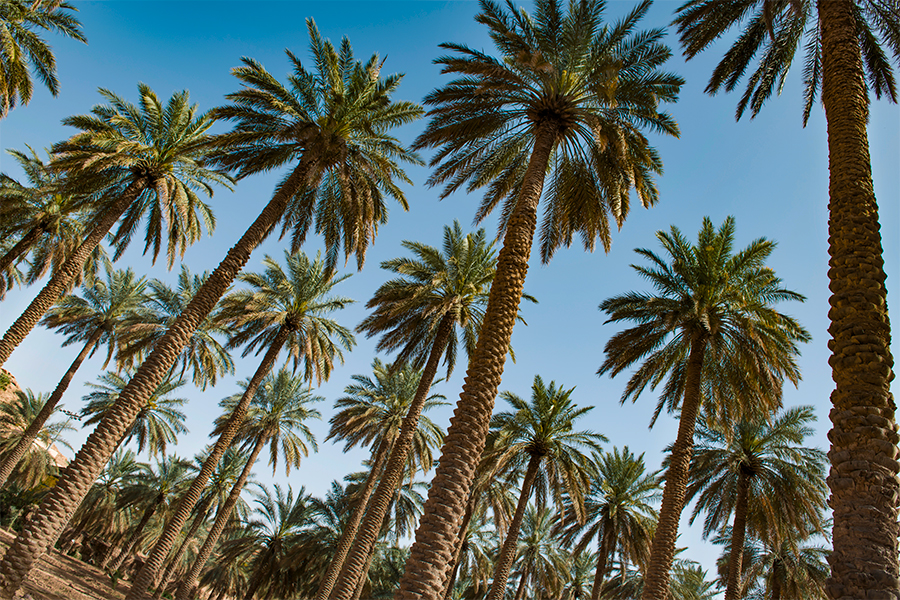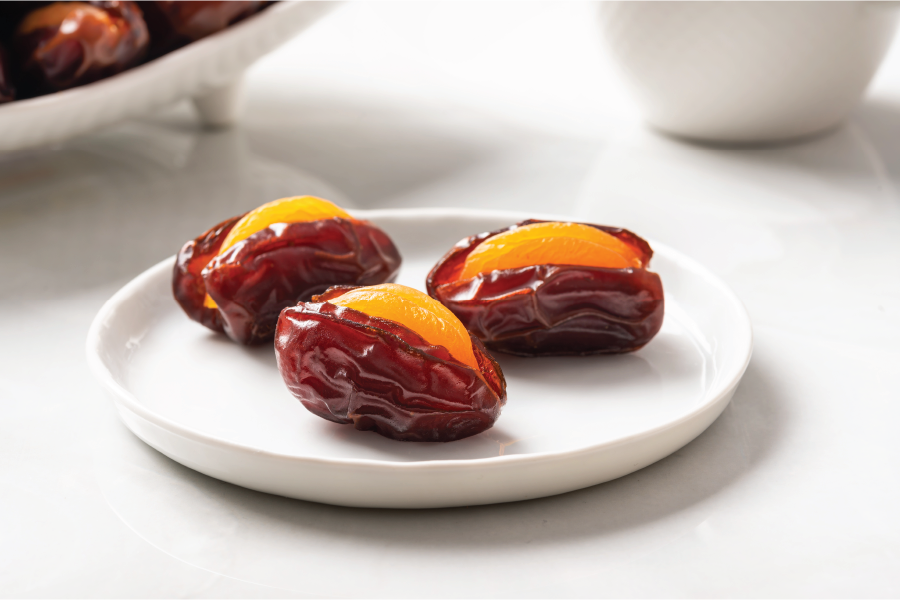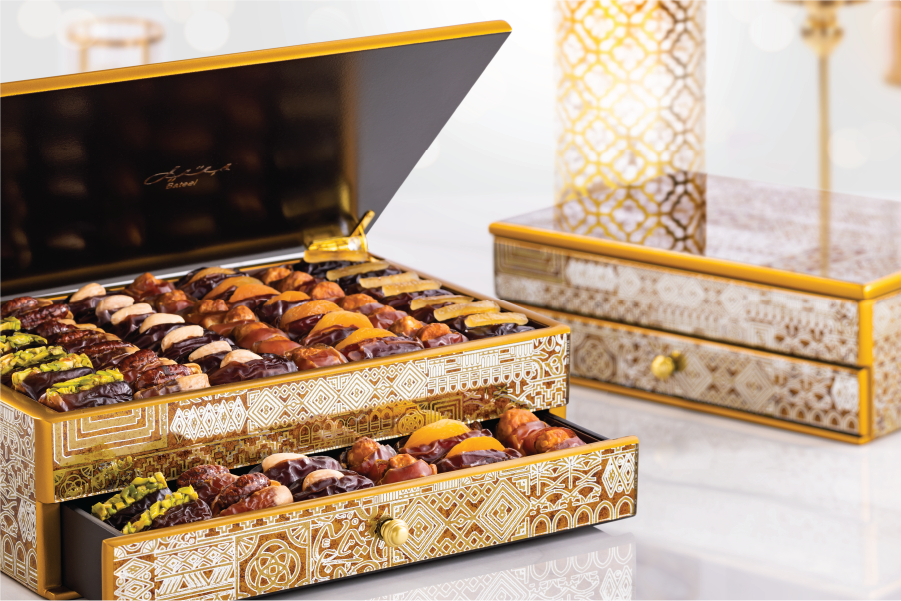
The date palm has inspired and nourished for millennia and is believed to be one of the oldest cultivated trees in the world. Though the exact origins of the date palm remain shrouded in mystery, discoveries in Mesopotamia and Egypt’s Nile Valley prove that these cherished trees have been around as early as 4000 B.C.
A natural wonder, date palms make around five years to bear fruit but live for as long as 100 years. The trees stretch up to 30 metres in height when fully grown, characterised by their distinctive trunk of overlapping woody fibre that appear to resemble spikes, and a crown of green pinnate leaves.
Thanks to ancient agricultural practices and time-honoured skills, dates have grown in abundance across the Middle East and beyond, and are revered for its prized fruit and timeless symbolism. Popularly referred to as the ‘tree of life’, ancient civilisations once looked to the date palm for life’s necessities – its fronds and trunks were used in the construction of modest dwellings in the past, while the date fruit was used for medicinal purposes and as welcome sustenance in otherwise arid climes.
RELIGION
As the trees spread far and wide across the Middle East and then to other dry climates across the globe, it began to nurture a spiritual meaning. There are references to palm trees in the religious text of Judaism, Christianity and Islam. Palm Sunday, a feast celebrated by Christians and Jews is rooted in the blessing and strategic placement of palm branches while, in ancient Greece, the tree also symbolised Apollo who was born under a date palm on the island of Delos.
The date palm is also mentioned over 20 times in the Holy Quran, and is closely associated with the Islamic faith. Officially listed on the UNESCO Intangible heritage list , it has long been a symbol of prosperity in the Arab world. Even today, it’s customary to greet visitors in the Middle East with a serving of fresh dates as a warm welcome.
FOOD & MEDICINE
Providing vital nourishment for generations of Middle East and North African civilisations, this ‘superfood’ presents an array of vital vitamins, minerals and antioxidants. In the Holy Quran, Prophet Muhammad (PBUH) urged the faithful to consume dates for its health-boosting powerful properties, many of which have been scientifically proven today.
Transforming from a food necessary for survival in harsh desert climates, dates are now an essential part of daily diets around the world. Incredibly versatile – whether filled with an assortment of ingredients or pressed into a sweet syrup – dates are in high demand.
It’s not just the fruit that’s edible – it was once routine to grind date stones and mix it with flour to craft special breads, or use the stones as feed for camels and horses. Even palm hearts were often cooked and eaten as vegetables, now it is considered a delicacy.
BUILDING & CONSTRUCTION
The Prophet’s Mosque – the first mosque in history – was built in 622 AD using the trunks of a date palm and mud to build its walls, as well as frond leaves for its roof. This helped lay the foundation of early construction in the region as proven by traditional areesh or barasti houses in the UAE and Saudi Arabia, which also relied heavily on date palms. The tree remained a valuable construction material right up until the mid-20th century.
The wood of the date palm, while not very hard, was also used in dwellings thanks to its ability to withstand hot, dry weather conditions. The material was also integral in building certain parts of early dhows – traditional sailing vessels that kept maritime trade alive across the Middle East.
ARCHITECTURE & ART
Evidence of centuries-old date cultivation appears in many forms, including the engraving of date palms on seals of the Assyrian Empire, archaeological artefacts and architecture where capitals of columns were carved to resemble palm trees.
Beyond architectural influences, the date palm became a renowned decorative element featured in the artistic mosaics of Byzantine Rome, which also explains an integral link with Christianity. The design inspiration of the trees, its branches and flowers can be seen far and wide, including Jerusalem’s Dome of the Rock and Damascus’ Great Mosque, while creative motifs were also embroidered on dresses, weaved into 17th-century carpets and more.
Fast forward to today, and many of the region’s talented artisans continue to be inspired by the palm tree in hand-crafted jewellery designs, as embroidered patterns on abayas, or even when creating sustainable accessories such as handbags made from palm leaves.

BATEEL’S DATE FARMS
At Bateel’s date groves, around 4,000 tonnes of dates are harvested every year from its groves in the fertile Al Ghat region of Saudi Arabia. The groves thrive thanks to Bateel’s commitment to sustainable farming practices. In fact, Bateel derives its name from the Arabic word that refers to the young offshoot of a date palm used to grow into a new tree, reaching for new horizons.
Like the word ‘bateel’ itself, the company is forging new culinary frontiers as the world’s only gourmet date grower, producer and seller, and as a pioneer in the international luxury food sector. Read more about our journey and discover a world of Bateel delights available online or a boutique near you.

